NEW STRATEGIES FOR SCALABLE INNOVATION
Futureproofing Core Banking Systems with Fintech
Inflexible core systems and legacy technology are hurdles to any bank looking to create customer-centric products and journeys. But fintech platforms allow financial institutions to work with their legacy technology instead of around it, clearing the way for new, personalized offers and tailored products.
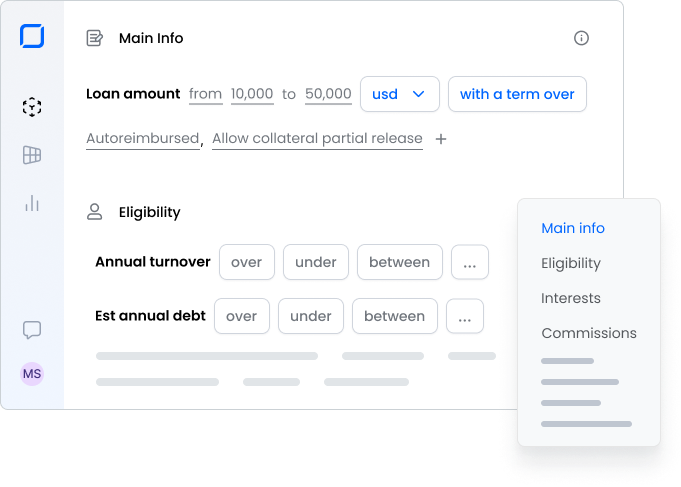
Futureproofing Core Banking Systems with Fintech Enablement
New Strategies for Scalable Innovation
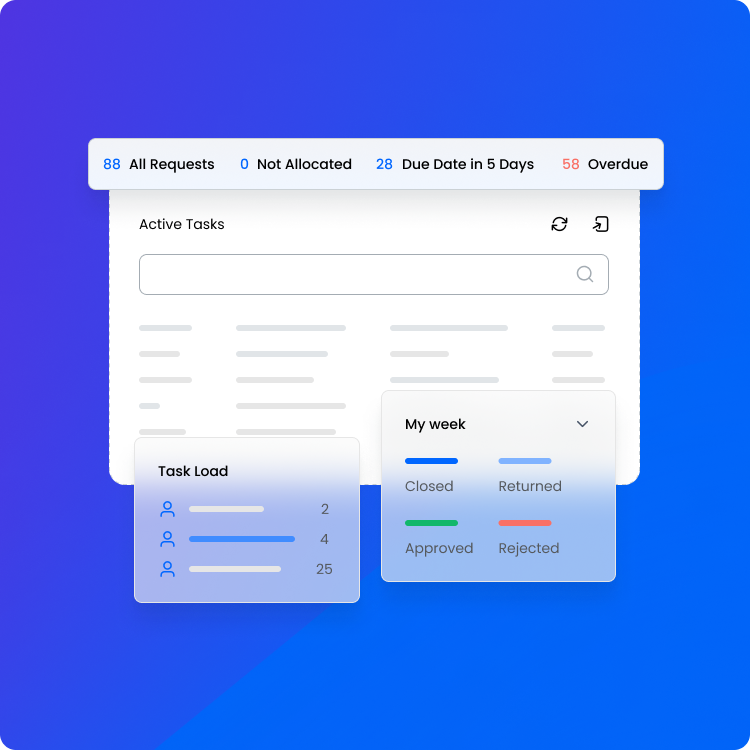
An Intro to Financial Product Management
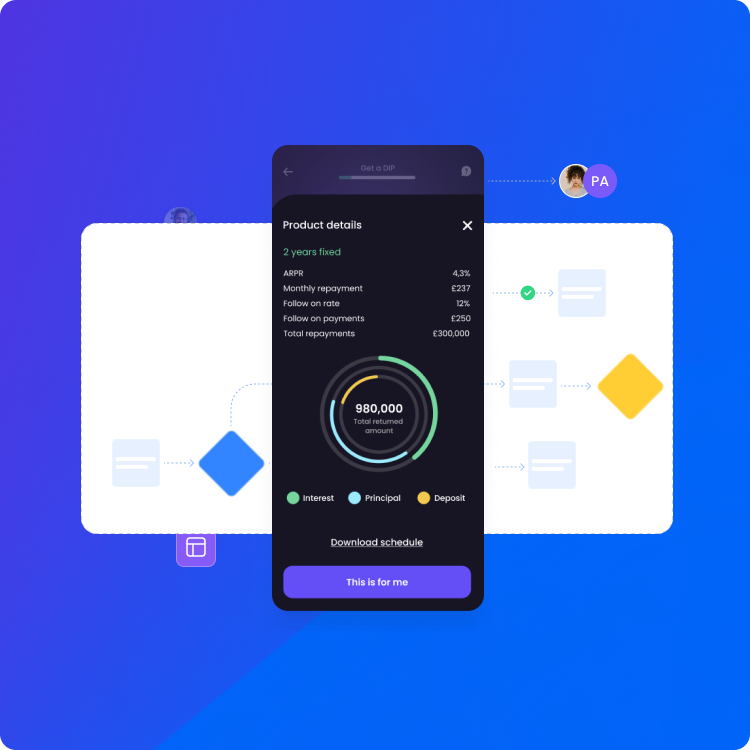
Core Banking, Redefined
However, banks still need to keep pace with technology and customer expectations. And while most banks offer online banking, they can be lacking in other areas. Customers expect services like account opening, deposits, and credit processing to be accessible from anywhere on any device – without having to visit their local branch.
These services are integral to core banking systems, but many financial institutions run the risk of falling behind and losing customers if those systems become outdated. With all this in mind, how can banks adapt and keep up?
By the Numbers: How Banking Has Changed
55%
200
15%
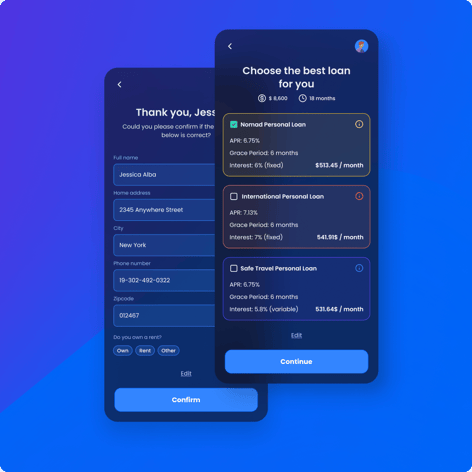
Raising the Bar for Core Banking
While core banking systems have been instrumental in facilitating this immediacy, they have somewhat reached their limits in terms of supporting banks' product innovation and management processes. This leaves banks somewhat stuck. Deeply entrenched legacy systems are hindering innovation, but the risk and cost associated with completely replacing those systems can put banks years behind their competition and delay all new product launches.
Want to learn even more? Check out these resources!
Define, Manage, and Launch Products Quickly
With the right fintech supporting them, banks can offer more diverse products and superior experiences for customers. And responding to customer needs in a quick and cost-effective manner can reduce churn as well as open new segments for banks previously left untapped. Tailoring experiences to a customer’s wants and needs is crucial if banks want to expand their customer base and grow areas such as deposits.
Outdated Legacy Systems are Costing Financial Institutions
Inflexible, monolithic core banking systems are hindering banks’ ability to innovate and launch new financial products and services that meet their customers’ needs.
While more than two-thirds of banking executives say that improving their products and services is a priority, 95% cite legacy and outdated core systems as a main inhibitor to their customer-centric innovation. This can put institutions at risk of losing customers and missing new market opportunities for expansion. Outdated core systems can also be a security risk, especially if they’re connected to a network and no longer being supported and maintained.
The Pressure Is On for Banks
200 digital banks have launched since 2015 and competition is now coming from within and outside the industry with big tech companies like Amazon and Tesla coming into the financial services space. And while nimble startups and tech giants have the technology and talent to make them agile in responding to customer needs with innovative offers and customer experiences, this is not the case for incumbent banks.
 According to a Capgemini report, 40% of customers say their banks currently don’t offer an innovative or personalized experience. In order to compete and avoid losing customers, banks will have to fundamentally rethink the way they define, manage and distribute financial products.
According to a Capgemini report, 40% of customers say their banks currently don’t offer an innovative or personalized experience. In order to compete and avoid losing customers, banks will have to fundamentally rethink the way they define, manage and distribute financial products.
Banks need to break their product management free from core banking platforms and decouple product innovation from outdated and inflexible core systems. This doesn’t mean ripping and replacing existing systems, but instead introducing a flexible product management and launch layer (known as fintech enablement) that integrates with them as well as any other partner products and services the bank might wish to employ. By adding a fintech enablement layer, banks can adapt rapidly to market fluctuations and grow at a pace that suits their requirements.
Rather than relying on costly and costly IT initiatives for every new product introduction or modifications to an existing offer, fintech enablement platforms empower product and proposition managers to define, distribute, and evaluate product performance independently via straightforward no-code tools, digital journey templates, and data dashboards.
Whether banks aspire to create complete end-to-end banking solutions, finely tuned products to cater to specialized customer segments, or simply new offerings based on existing products, fintech enablement can help them transition from a minimum viable product to a live product in mere weeks, not years. This gradual approach enables them to modernize their IT infrastructure with composable capabilities.
Report: Capitalizing on Embedded Finance and Fintech Opportunities
Frequently Asked Questions
-
According to Gartner, a core banking system is a back-end system that processes daily banking transactions and posts updates to accounts and other financial records. Core banking systems typically include deposit, loan, and credit processing capabilities with interfaces to general ledger systems and reporting tools.
-
Core banking systems usually rely on different components in their architecture. These components can include traditional elements like ATMs, or more contemporary digital tools like: Point of Sale (POS) interfaces, mobile banking apps, and commercial portals. To ensure seamless operations, all these components require a robust mainframe as the backbone.
-
“Digital transformation” refers to a change in how banks function in regards to new technology. Digital technology and innovation play a huge role in digital transformation at any company. Digital transformation can mean unifying systems, creating more efficient processes, and using new tools or automations to streamline operations. For financial services, digital transformation needs to be carefully managed to comply with regulations.
-
A no-code/low-code platform skips the “hard coding” aspect traditionally intertwined with creating a new product. A no-code/low-code platform employs a user-friendly graphical interface to simplify the building process for users. Users can often drag and drop elements, use WYSIWYG text editors, and color pickers in these platforms -- though each platform may offer different features. But, overall, no-code/low-code platforms give users inexperienced in coding the ability to build and develop new products.
-
Financial product management allows banks to create customer-centric products and journeys in a more agile way. These platforms can also integrate data to create a more personalized customer journey, allowing banks to create experiences tailored to customer needs and expectations.
-
Fintech platforms can usually integrate with pre-existing systems. This minimizes disruption for banks and leverages infrastructure already in place to support new products on the backend.
-
Financial product management platforms and solutions allow banks to modernize without the major disruptions that would be involved with the “rip and replace” of completely replacing their core. This makes banks much more agile when it comes to creating and expanding products, while also lowering costs – both time and money.
How Can Banks Keep Up?
Keeping up and differentiating is an old problem for financial institutions, made only more challenging with the advent of e-commerce and online banking. Keeping pace with the ever-accelerating rate of innovation is costly, but necessary. This means banks often face a difficult decision when developing new products: either buy a solution that doesn't quite meet their needs or invest in a completely custom product. This "buy vs build" dilemma forces banks to choose between speed to market and differentiation.
Custom Development v. Vertical Turnkey Solutions
Banks often face a difficult decision when developing new products: either buy a solution that doesn't quite meet their needs or invest in a completely custom product. This "build vs buy" dilemma forces banks to choose between speed to market and differentiation.
Custom Development
Custom development projects can take months and cost thousands of dollars to build a single customer onboarding journey. Banks either need to hire expensive and scarce tech talent, which can be challenging, or rely on external vendors to build and/or maintain these solutions. Simple updates can take months and thousands of dollars, leaving banks at the mercy of vendor contracts and fees, and losing control of their customer experience.
Vertical Turnkey Solutions
Vertical turnkey solutions, such as SaaS and COTS, offer pre-built capabilities that cater to specific industries, allowing banks to hit the ground running. However, these solutions can be inflexible and difficult to customize, leading to undifferentiated offers or costly and lengthy customization projects. Additionally, these solutions may lack the full suite of tools and capabilities needed, resulting in added development costs.
While horizontal low-code platforms have attempted to solve these issues, they offer limited vertical-specific capabilities, requiring financial institutions to build everything from scratch and diverting time and money away from the most differentiating aspects of their products, journeys, and servicing capabilities.
Finding the Middle Ground
When it comes to financial product innovation, banks are faced with a crucial decision: to purchase a solution that may only somewhat fit their needs or develop a completely customized product from scratch.
However, there is another option available that provides the best of both worlds. A fintech enablement platform offers a range of pre-built capabilities specific to the banking industry, including vertical banking capabilities for product definition, digital journey creation, and servicing. What sets this option apart is that these capabilities can be fully customized and extended to best suit their unique needs.
By leveraging these banking capabilities and pre-built accelerators for banking product definitions, banking data models, digital journey templates, and ecosystem connectors, banks can save valuable time and resources, while still maintaining the flexibility and speed of low-code platforms. This means that product and IT teams can focus on the most differentiating features and capabilities of new products and services, without having to reinvent the wheel.
With a fintech enablement platform, banks can tailor their solutions to their unique needs, and achieve faster time-to-market, lower development costs, and ultimately, a better customer experience.
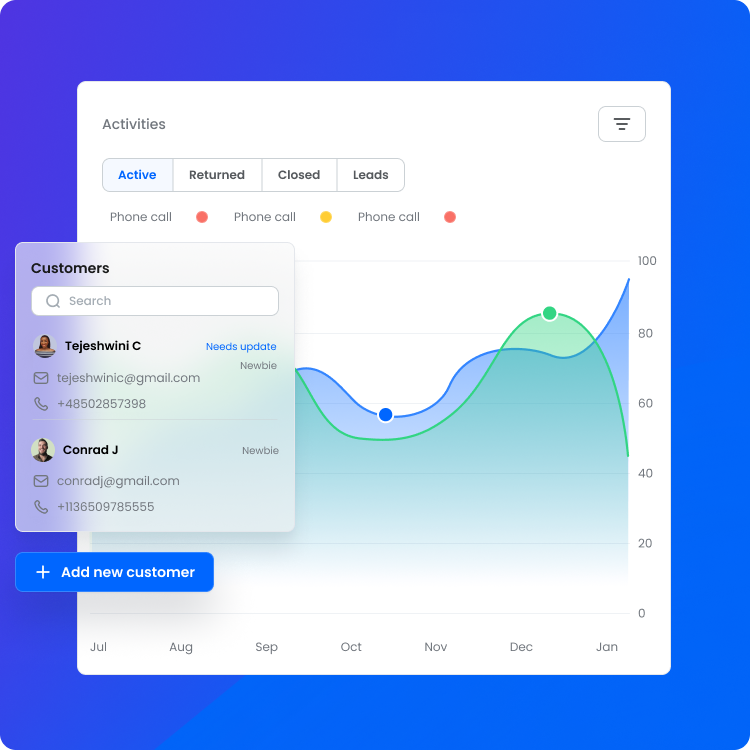
Futureproofing Core Banking With Fintech Enablement
Whether banks aspire to create complete end-to-end banking solutions, finely tuned products catering to specialized customer segments, or simply new offerings based on existing products, fintech enablement can help them transition from a minimum viable product to a live product in weeks, not years. This gradual approach enables them to modernize their IT infrastructure with composable capabilities.
What Is Fintech Enablement?
Fintech enablement platforms are purpose-built fintech operating systems that allow financial institutions to launch, service, and expand new and existing products. Fintech enablement walks the fine line between vertical turnkey solution and custom development. A low-code/no-code interface and third-party data allows anyone to quickly build tailored customer journeys that can cater to any one segment.
The main advantage of using fintech enablement platforms is how they accelerate a bank’s agility and ability to deliver new products. Be removing the middleman often associated with customer development and adding in the customization turnkey solutions lack, a product team can not only launch but also iterate on new products and ideas. This allows banks to quickly respond to market changes and customer expectations. Instead of reacting, banks can proactively transform themselves into modernized institutions. And all of this comes without the risk of having to rip-and-replace an entire core system.
No More Ripping and Replacing
By leveraging fintech enablement platforms, financial product teams can not only independently define and reimagine products and services with speed, but also distribute them to customers and partners through fully digitalized customer journeys. These journeys can be tailored to suit the specific product and channel, whether it's the bank's own website or mobile app, a broker, or an e-commerce partner, ensuring that customers enjoy a seamless experience, regardless of where they choose to make a purchase. This means that banks can reserve IT teams for the most technical tasks, such as complex integrations.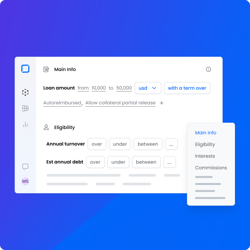 Fintech enablement platforms also allow IT teams to modernize their systems gradually and on their own schedule. By decoupling product innovation from rigid systems, banks can replace specific components as needed, leveraging pre-built and composable business capabilities for product definition, journey creation, and servicing. This approach to core modernization, once a risky and time-consuming process costing millions of dollars, is now much easier and safer, with no disruption to daily operations.
Fintech enablement platforms also allow IT teams to modernize their systems gradually and on their own schedule. By decoupling product innovation from rigid systems, banks can replace specific components as needed, leveraging pre-built and composable business capabilities for product definition, journey creation, and servicing. This approach to core modernization, once a risky and time-consuming process costing millions of dollars, is now much easier and safer, with no disruption to daily operations. One of the greatest benefits of fintech enablement platforms is the ability to integrate the data and capabilities of internal systems with innovative services from the broader fintech ecosystem. This combination provides banks with a powerful set of tools for developing and delivering new products and services to their customers quickly and efficiently.
Fintech enablement platforms offer banks and financial institutions the ability to incorporate cutting-edge technologies into their products and digital journeys, without the need for specialized talent or outside vendors. This is achieved by enriching their existing systems with third-party fintech ecosystem solutions and services. By leveraging these solutions, financial institutions can save time and money, while also staying ahead of the curve in terms of technological innovation.
Data Makes a World of Difference
Fintech enablement platforms offer banks a powerful capability when it comes to data. Banks possess a wealth of customer data, but it is often trapped within legacy systems and scattered across departments and multiple SaaS or COTS solutions. With fintech enablement, banks can effortlessly consolidate all this data into a unified view, enhance it with third-party data sources and gain a 360-degree understanding of their customers and product portfolio.
This holistic view enables them to identify which products are performing well, and which ones aren't, and discover new opportunities to upsell and increase their share of wallet with existing customers. By leveraging this data, banks can make informed business decisions, address emerging customer needs, differentiate from competitors, and ultimately increase profitability.
Fintech Enablement: the Middle Ground
When it comes to financial product innovation, banks are faced with a crucial decision: to purchase a solution that may only somewhat fit their needs or develop a completely customized product from scratch. Both options can have their shortcomings. Vertical turnkey solutions can offer little in terms of personalization or customization while customer development can cost banks precious time and money.
However, there is another option available that provides the best of both worlds. A fintech enablement platform offers a range of pre-built capabilities specific to the banking industry, including vertical banking capabilities for product definition, digital journey creation, and servicing. What sets this option apart is that these capabilities can be fully customized and extended to best suit their unique needs.
By leveraging these banking capabilities and pre-built accelerators for banking product definitions, banking data models, digital journey templates, and ecosystem connectors, banks can save valuable time and resources, while still maintaining the flexibility and speed of low-code platforms. This means that product and IT teams can focus on the most differentiating features and capabilities of new products and services, without having to reinvent the wheel. With a fintech enablement platform, banks can tailor their solutions to their unique needs, and achieve faster time-to-market, lower development costs, and ultimately, a better customer experience.
Want to learn even more? Check out these resources!
.png?width=701&height=643&name=shutterstock_2%202%20(1).png)
Fintech Enablement Makes Banking Modernization & Innovation Possible
Fintech enablement platforms offer more than just the ability for business users to innovate on products and customer experiences - they also help IT teams tackle technical debt and modernize their systems.
By decoupling innovation from inflexible systems and offering composable business capabilities, banks can modernize their systems gradually and at their own pace, eliminating the need for costly and risky "rip and replace" approaches for core modernization. This way, banks can prioritize both customer-centric innovation and system modernization without risking disruption to their business operations.
Any product launched using a fintech enablement platform can be scaled and evolved quickly to respond to changing market conditions such as new regulations, competitive pressures, or evolving consumer preferences. In the highly competitive financial landscape, failure to keep pace with changing customer needs and preferences can result in significant loss of revenue and customers, making agility and responsiveness critical for success.
With fintech enablement, banks can take control of how they define, distribute, and service their products, enabling them to stay ahead of the competition.


.jpg)


